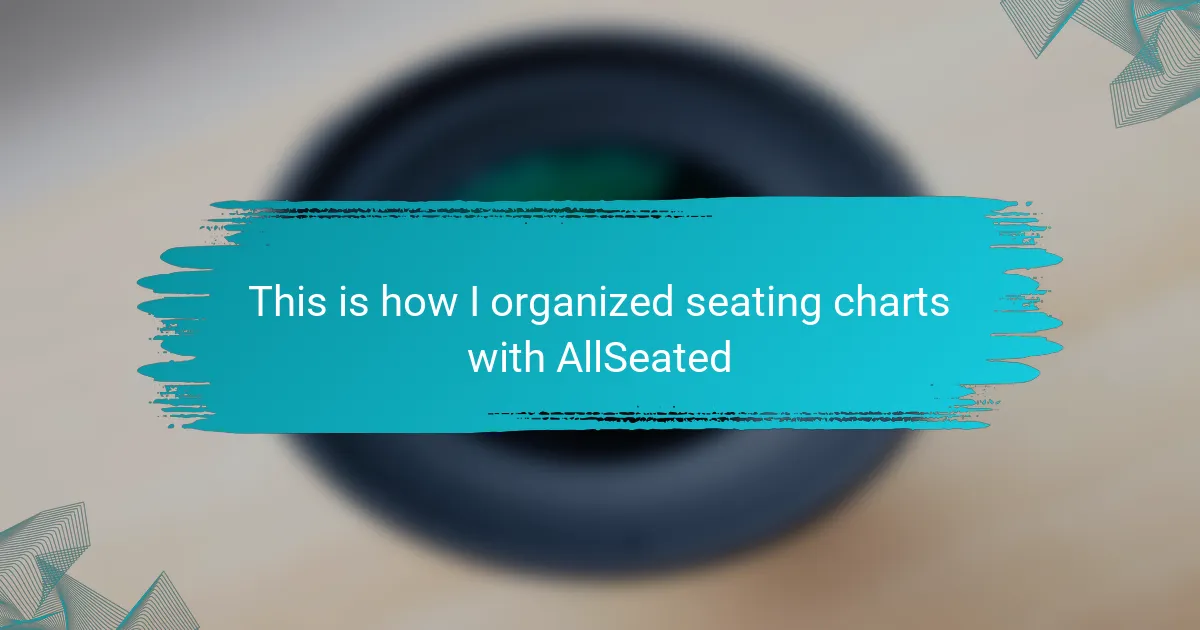Key takeaways
- Guest relationships and family dynamics are crucial considerations when creating seating charts to ensure a comfortable atmosphere.
- Using tools like AllSeated can simplify the process, offering features like 3D visualization and real-time collaboration for better organization.
- Effective seating arrangements can enhance guest interaction and create lasting memories, while poor arrangements may lead to awkwardness.
- Flexibility with the guest list and communication about sensitive dynamics are essential for adapting seating plans as needed.
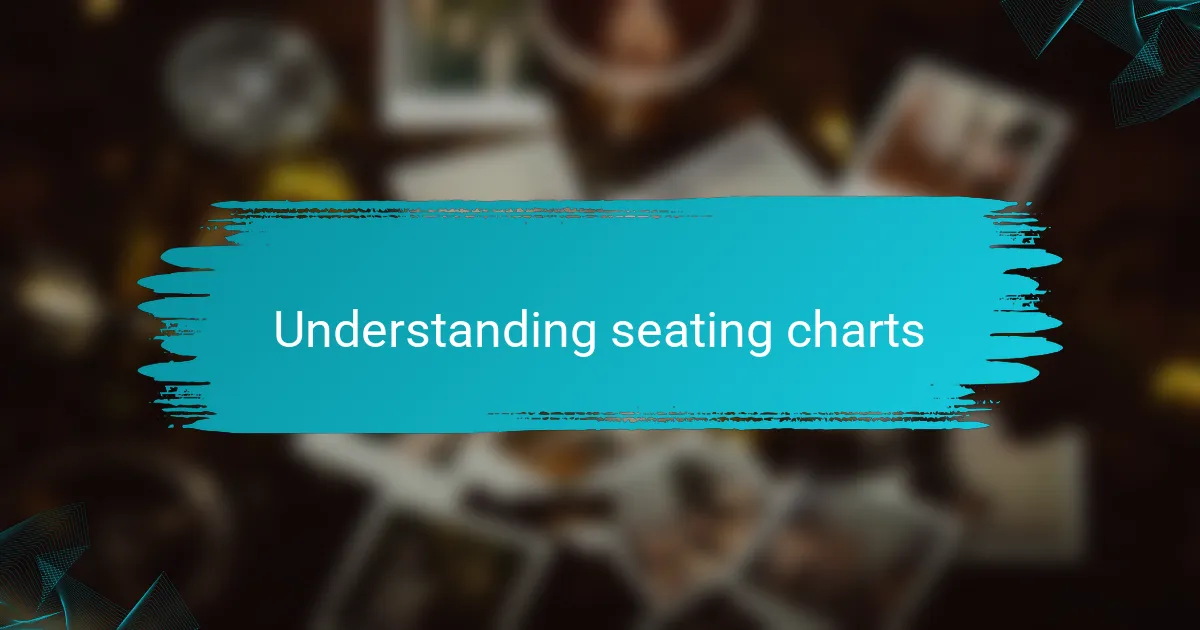
Understanding seating charts
Creating seating charts can seem daunting, especially when planning a wedding. I remember the first time I tackled this task; emotions ran high as I thought about who should sit where, considering relationships and dynamics. It’s not just about placing guests at tables — it’s about creating a comfortable environment where everyone feels welcomed and enjoys themselves.
When you start understanding seating charts, begin by recognizing the importance of guest relationships. Here’s a quick breakdown of what to consider:
- Guest Relationships: Think about who knows each other and who might prefer to sit near someone familiar.
- Family Dynamics: Be mindful of family tensions; seating disputes can spoil the atmosphere.
- Table Size: Ensure you’re aware of how many guests each table can accommodate.
- Special Needs: Consider guests with mobility issues or special requirements.
- Bridal Party Considerations: Seat your wedding party together but ensure they mingle with their partners too.
By examining these elements, you can create a lively and inclusive atmosphere that reflects the joy of the day.
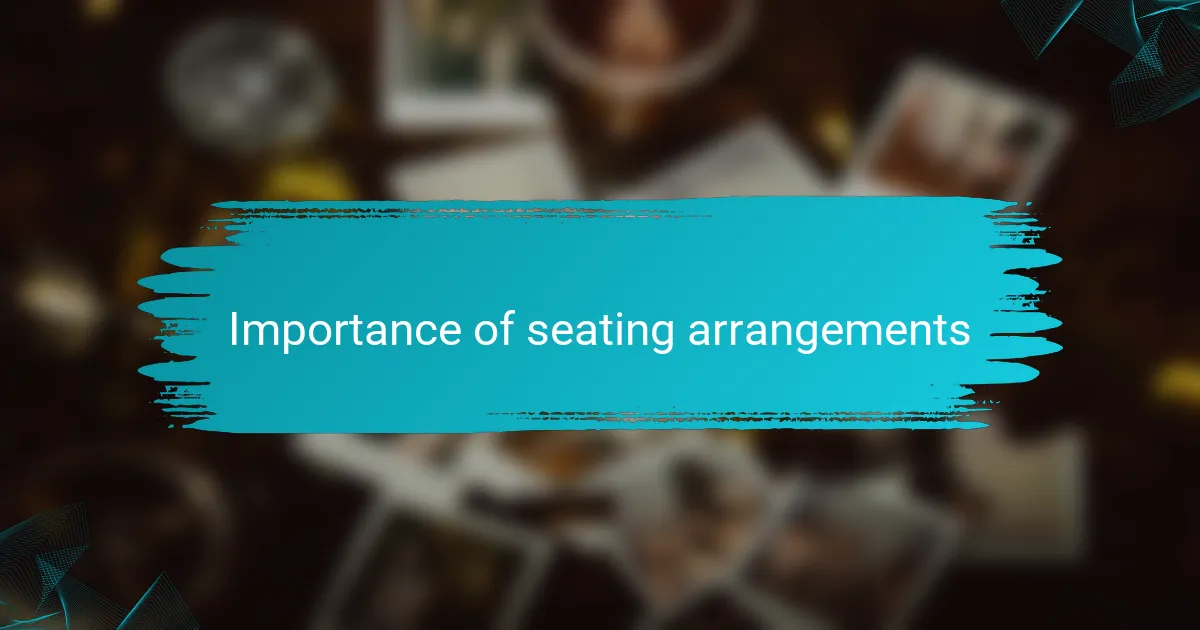
Importance of seating arrangements
Seating arrangements play a crucial role in shaping the guest experience at weddings. I’ve seen firsthand how a well-thought-out seating chart can transform the energy of a reception. When guests feel comfortable and connected, it often leads to more lively conversations and memorable moments throughout the event.
I remember one wedding where the seating decisions were spot on. A couple thoughtfully grouped friends who hadn’t seen each other in years. Their joy was infectious, and it sparked a series of reunions that many cherished. Isn’t it fascinating how simply placing people together can create lasting memories?
On the other hand, overlooked seating arrangements can lead to awkwardness or even discomfort. When family dynamics aren’t considered, the tensions can be palpable. I’ve experienced weddings where an unaddressed issue caused guests to avoid each other, which significantly dampened the atmosphere. It’s a stark reminder of the impact our seating choices have on overall enjoyment and harmony.
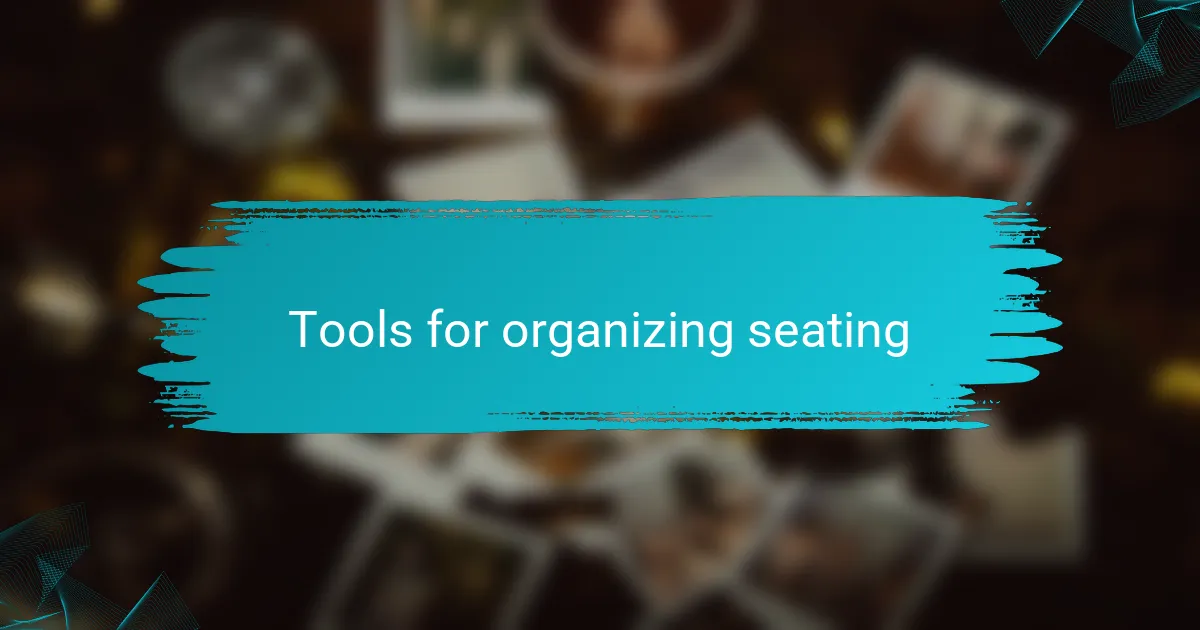
Tools for organizing seating
When it comes to organizing seating charts, using the right tools can make all the difference. I’ve found that AllSeated stands out for its user-friendly interface and collaborative features, allowing couples to design their seating arrangements with ease. Another tool worth considering is Google Sheets, which, while less visually appealing, offers robust flexibility for tracking guest preferences and adjustments.
Here’s a quick comparison to help you decide which tool might suit your needs best:
| Feature | AllSeated | Google Sheets |
|---|---|---|
| User Interface | Visual and intuitive | Basic and functional |
| Collaboration | Easy sharing and real-time updates | Sharing capabilities with basic commenting |
| Graphic Options | 3D floor plans and customizable layouts | No graphic options; purely list-based |
| Cost | Limited free functionalities; paid subscriptions for premium features | Free with Google account |
Reflecting on my experience, I remember feeling overwhelmed during the seating chart process. AllSeated truly simplified things for me; I could easily drag and drop my guests, ensuring I thought of each relationship dynamic. It’s those little details that make a huge difference on the big day.

Overview of AllSeated features
AllSeated is an exceptional tool that streamlines the process of creating seating charts for any event, particularly weddings. I’ve had my fair share of chaotic seating arrangements, and using AllSeated changed the game for me. It allowed me to visualize the layout in a way that made it not only easier to organize guests but also to consider their dynamics, like seating family members who get along or perhaps keeping the more energetic guests away from the older ones.
Here are some fantastic features of AllSeated that I’d like to highlight:
- 3D Visualization: It provides a stunning 3D view of your seating chart, helping you see how everything fits together in the actual space.
- Guest List Management: Effortlessly manage your guest list, ensuring no one is left out, and who is seated where is easily adjusted.
- Real-Time Collaboration: Share your seating chart with others, like your partner or wedding planner, allowing for collaborative input and suggestions.
- Interactive Floor Plans: Customize floor plans based on your venue, from the banquet hall to outdoor spaces, ensuring every inch is utilized effectively.
- Seating Arrangements: Flexible options for different seating styles—rounds, rectangles, or lounge setups—help create the perfect atmosphere for your celebration.
In my experience, these features not only simplify planning but also helped me feel more at ease knowing I was making informed decisions about who would be sitting where.
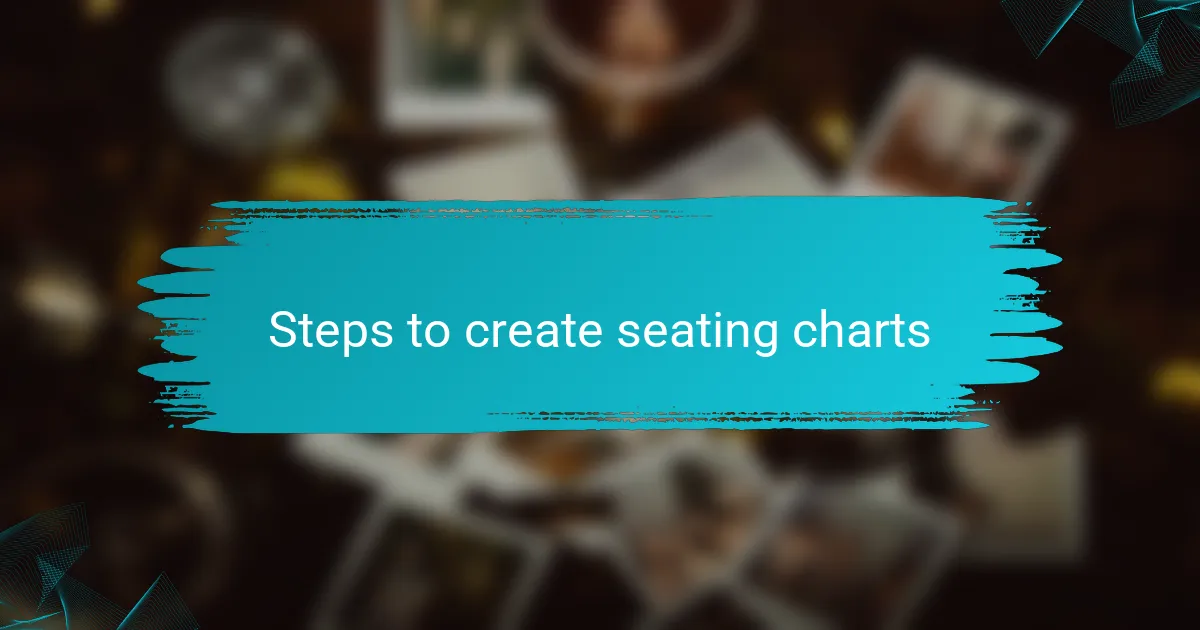
Steps to create seating charts
Creating seating charts can feel overwhelming, but I’ve found that using AllSeated simplifies the process significantly. First, I start by logging into the platform and choosing the layout that matches my venue. From there, I can easily drag and drop tables and place guests, which makes it visually intuitive and helps me visualize the flow of the event.
One of my favorite features is the ability to color-code tables. For instance, I often group family members by colors and friends by another, allowing me to see at a glance who’s sitting where. This not only speeds up the organization but also adds a personal touch to the seating arrangement, making it easier for everyone to connect on the big day.
Here’s a comparison table to illustrate the steps involved in creating seating charts with AllSeated:
| Step | Description |
|---|---|
| 1. Login | Access your AllSeated account to get started. |
| 2. Select Layout | Choose a template that reflects your venue’s layout. |
| 3. Arrange Tables | Drag and drop tables to customize the setup. |
| 4. Assign Guests | Place guests at tables, using color codes for easy identification. |

Tips for effective seating plans
When crafting effective seating plans, it helps to start with an open mind. I often think about the social chemistry that can unfold at a wedding; it’s amazing how seating can influence the mood. For instance, placing lively friends at tables with quieter guests can create a beautiful balance, allowing for genuine conversations and delightful interactions. Have you ever experienced a table where the guests sparked unexpected friendships? I certainly have, and those moments are what make weddings unforgettable.
Another tip I swear by is to keep the guest list close at hand. I recall a wedding where last-minute changes left a few people in awkward positions simply because the seating plan was not updated. I learned the hard way how critical it is to be flexible. Using a tool like AllSeated to adjust arrangements on the fly can save you from potentially uncomfortable scenarios—believe me, it’s best to plan for the unexpected.
Lastly, always consider the dynamics of family members. In my experience, placing certain individuals together can either enhance the celebration or lead to tension. A wise approach is to communicate with the couple about sensitive situations ahead of time. They’ll appreciate your foresight and feel more confident knowing their loved ones are seated thoughtfully. Have you ever realized midway through an event that guests weren’t sitting where they felt most comfortable? It’s a reminder that understanding your audience is key to a successful seating plan.
